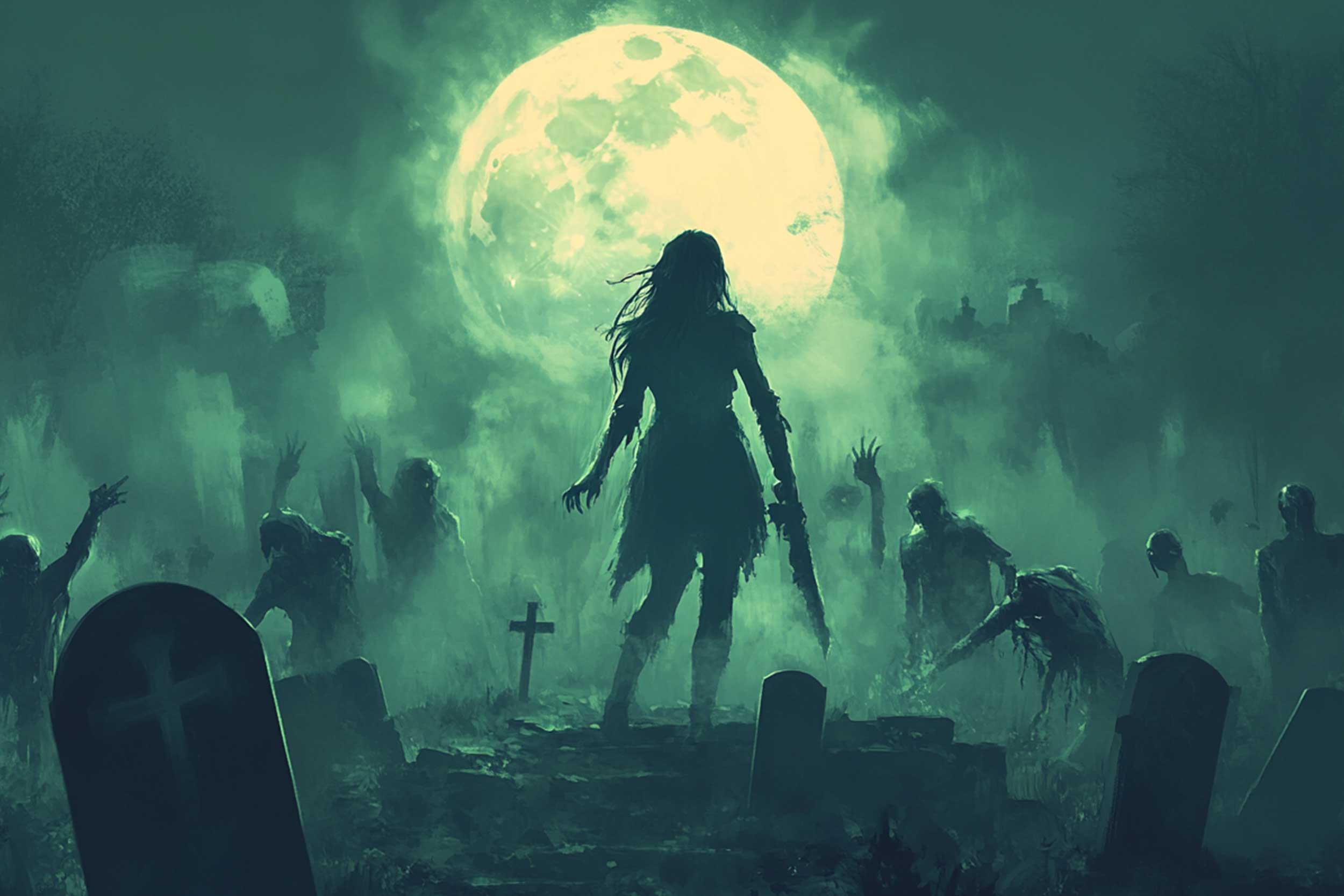Table of Contents
In The Laughing Corpse, the second installment of the Anita Blake series, Laurell K. Hamilton delivers a fast paced horror book that dives deeper into the world of necromancy, dark magic, and moral dilemmas. A month after the events of Guilty Pleasures, Anita Blake is once again thrust into a dangerous situation, this time with even higher stakes, as she’s asked to raise a centuries old corpse using human sacrifice.
The Laughing Corpse centers around two major plotlines. First, Anita is contacted by Harold Gaynor, a local millionaire who is willing to pay her millions of dollars to animate a 300 year old corpse, an offer she refuses outright once she realizes it would require a human sacrifice, which Gaynor disturbingly refers to as a “white goat.” Simultaneously, Anita is brought into a horrifying murder investigation, where a family has been brutally slaughtered, likely by a flesh eating zombie. As she navigates these cases, Anita encounters dangerous forces, including a powerful vaudun priestess, Dominga Salvador, who has her own terrifying plans for the dead.
This The Laughing Corpse by Laurell K. Hamilton summary only scratches the surface of the horror book’s intense plot twists, dark magic rituals, and ethical quandaries that follow Anita throughout the story.
Characters and Themes in The Laughing Corpse by Laurell K. Hamilton
The Reluctant Hero Anita Blake
Anita Blake, as always, remains the heart of the story. In The Laughing Corpse, she’s faced with decisions that test her boundaries as a necromancer and as a person. Laurell K. Hamilton does a fantastic job of making Anita’s struggle feel relatable, even when the stakes are supernatural. Her refusal to animate the ancient corpse, despite the lure of immense wealth, speaks to her strong sense of morality, a theme that runs throughout the book. Anita constantly balances her powers with the responsibility they bring, making her one of the most grounded characters in a world of vampires, zombies, and dark magic.
A Chilling Antagonist Dominga Salvador
One of the stand-out characters in this scary book is Dominga Salvador, a vaudun priestess whose methods are as terrifying as they are effective. She has no qualms about enslaving the souls of the dead, forcing them into zombies to create grotesque, yet powerful, tools for her own profit. Salvador’s invitation to Anita to join forces adds to the horror, offering a glimpse of the path Anita could take if she abandoned her ethical concerns. This creates a fascinating contrast between the two women, as they represent opposing ends of the necromantic spectrum.
Moral Dilemmas and the Cost of Power in The Laughing Corpse by Laurell K. Hamilton
A key theme that Laurell K. Hamilton explores in The Laughing Corpse is the moral dilemma surrounding power. Anita’s constant refusal to engage in human sacrifice, despite the mounting pressure, shows her commitment to remaining morally upright. But even as she draws these lines, there’s a sense that her power is growing, and the implications of this become clearer as the story progresses. Hamilton’s portrayal of these ethical issues gives the horror book more depth, turning it into more than just a thriller, it becomes a story about responsibility, control, and the cost of crossing certain lines.
Writing Style and Pacing in The Laughing Corpse by Laurell K. Hamilton
In this The Laughing Corpse by Laurell K. Hamilton review, it’s worth noting how well Hamilton handles pacing and atmosphere. The book is incredibly fast paced, filled with tense confrontations, gruesome crime scenes, and moments of quiet reflection. While the horror elements shine, particularly in the vivid descriptions of zombies and murder scenes, the book also delves deep into Anita’s internal struggles, giving readers a balanced mix of action and introspection.
However, some of the more detailed explanations of necromantic rituals and voodoo practices can feel a little repetitive, which might slow the narrative down at points. Despite this, the complexity of the world building is a big part of what makes The Laughing Corpse stand out in the horror genre. Hamilton takes the time to make her world feel authentic and frightening.
What Worked Well in The Laughing Corpse by Laurell K. Hamilton
- Engaging Plot: The dual mysteries of Gaynor’s offer and the flesh eating zombie create a strong and suspenseful story. Anita is constantly on her toes, and the stakes keep rising.
- Moral Complexity: Anita’s moral dilemmas add real depth to the narrative. Her refusal to give in to temptation or compromise her ethics makes her a truly compelling protagonist.
- Memorable Villains: Both Harold Gaynor and Dominga Salvador are well-developed antagonists with motivations. Their ruthlessness raises the tension and creates an atmosphere of real danger.
Areas of Criticism in The Laughing Corpse by Laurell K. Hamilton
- Repetitive Descriptions: While Hamilton’s attention to detail is impressive, there are moments where the descriptions of rituals or magical practices feel overly detailed. Some readers may find that this bogs down the pacing in certain sections.
- Underdeveloped Side Characters: Characters like John Burke and Wheelchair Wanda had the potential to add even more layers to the story, but they feel a bit underexplored, especially given their importance to the plot.
Conclusion
In The Laughing Corpse by Laurell K. Hamilton review, it’s clear that the book is a standout addition to the Anita Blake series. Hamilton’s blend of supernatural crime, horror, and moral intrigue creates a compelling narrative that keeps readers hooked from start to finish. While the book is undeniably a scary book filled with gruesome scenes and tense action, it’s also a story that challenges its protagonist, and its readers, to think about the cost of power and where the lines should be drawn.
If you’re a fan of horror, dark fantasy, or supernatural mysteries, The Laughing Corpse is a book that’s sure to leave an impression. It’s a wild ride into a world of zombies, dark magic, and ethical challenges, with Anita Blake standing firm in the face of overwhelming darkness.






